Tutorials: programTutorial description
Tutorials are the highlight of hands on activities and complement demonstrations. We are honored to have the participation of Analog Device's Robin Getz demonstrating SDR using the PlutoSDR platform. The tutorial titles and short descriptions are given below. This document indicates how to launch the virtual machine provided on the machine of ENSMM PlutoSDRRobin Getz (Analog Devices) Software defined radio on the PlutoSDR. See https://archive.fosdem.org/2018/schedule/event/plutosdr We will be providing the infrastructure to run the tutorials on MS-Windows computers running GNU/Linux in a VirtualBox (see Tutorials: hardware and software). If you wish to setup your own personal computer for running the tutorials, please follow the instructions given at https://wiki.analog.com/grdayseu2019. Hacking a WSN protocol with GNU RadioHervé Boeglen (Xlim) Nordic Semiconductor NRF24x and NRF52x chips are used in a wide range of low-power, low-rate WSN and IoT applications. This tutorial will present the steps required to build a fully functional Nordic proprietary protocol sniffer and analyzer using GNU Radio. Exploring the radiofrequency spectrumLeo Cardoso & Mathieu Cunche (INSA Lyon) The radio spectrum is a wild world where a variety of signals can be observed. In this tutorial, we will see how we can use GNURadio to explore this world and the numerous protocols and applications that populate it. To this aim, we will design a spectrum analyser based on the GUI elements offered by GNURadio and instruments as well as to play around with some basic signal processing concepts. Some subjects will be touched upon:
We explore the radiofrequence spectrum in the subset of the frequency range of the PlutoSDR accessible to the low-cost DVB-T receivers, namely 70-1600 MHz. This tutorial does not focus on digital mode demodulation but rather on identifying charactersitics of radiofrequency transmitted signals, such as bandwidth or modulation scheme, aimed at ELINT rather than COMINT. Classical communcation mode characteristics will be investigated, starting with the commercial broadcast FM band, then considering the POCSAG messenger system ("alerte rapide, sécurisée et fiable" -- a fast, secure and reliable alert system, see https://www.emessage.fr/emessage-fr/a-propos/alphapage/index.php) and various other sub-GHz communication protocoles. Writing a custom GNU Radio processing blockTanguy Risset (INSA Lyon) GNU Radio proposes a mechanism for writing custom blocks, so called OOT blocs for 'Out Of Tree' blocs. These blocks can be written in C++ or in Python. This tutorial investigates how to write C++ blocks which are much more efficient than Python blocks. Writing a custom block uses several langages (Pyhton, C++, XML) and requires understanding the basic GNURadio underlying mechanisms for handling block execution. This tutorial will follow classical block creation using the gr-modtool command, then study blocks with history. |


